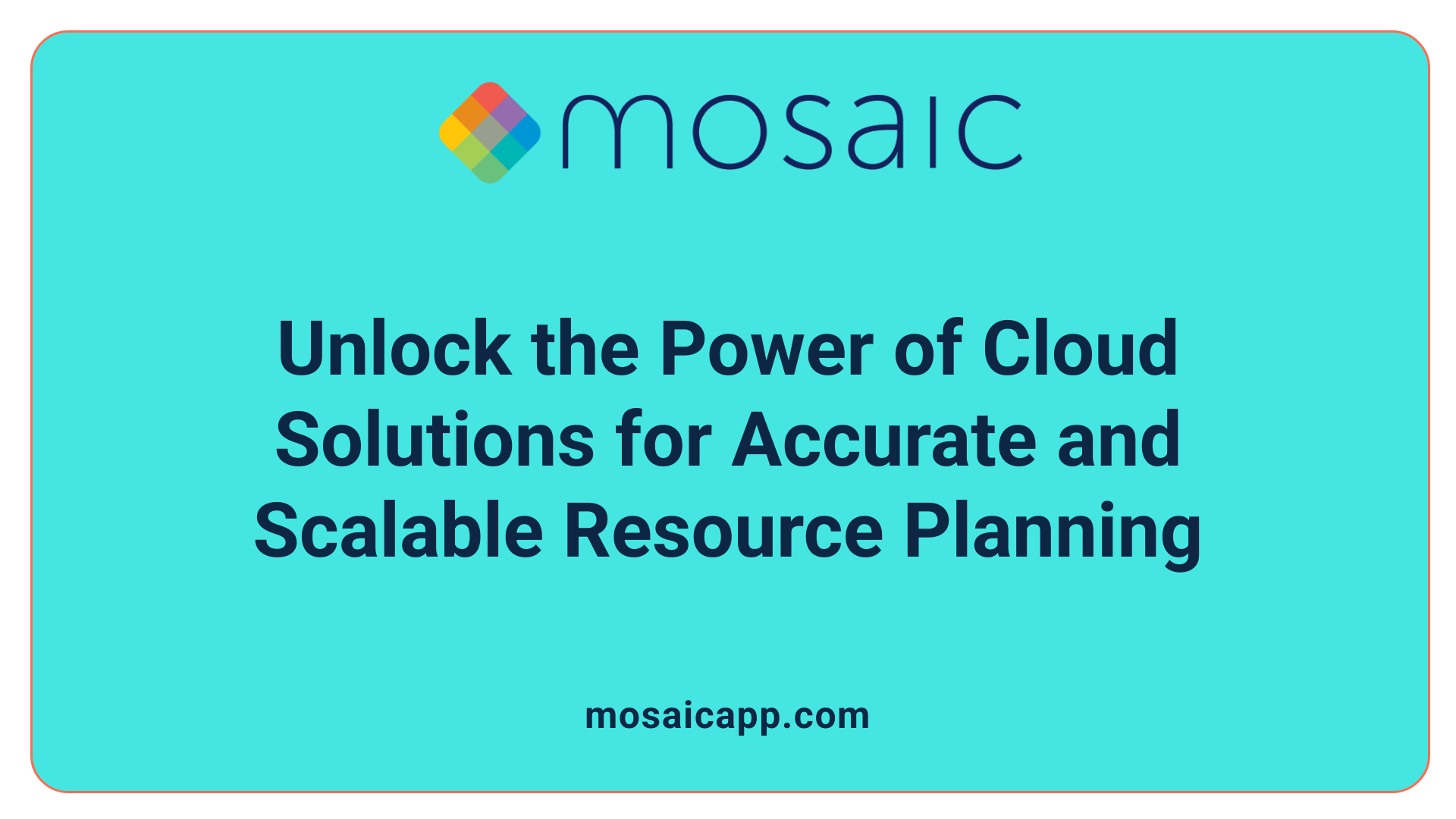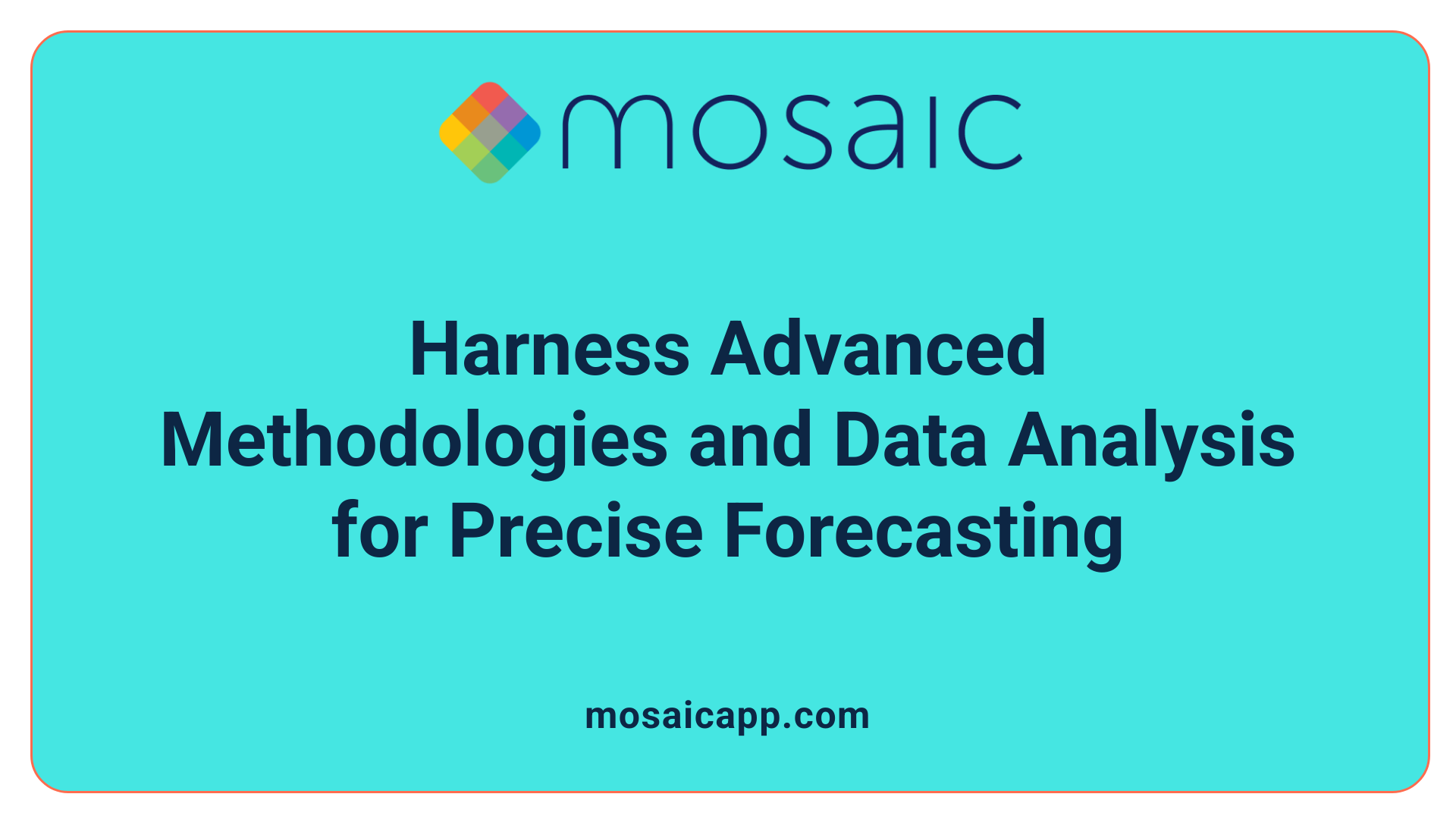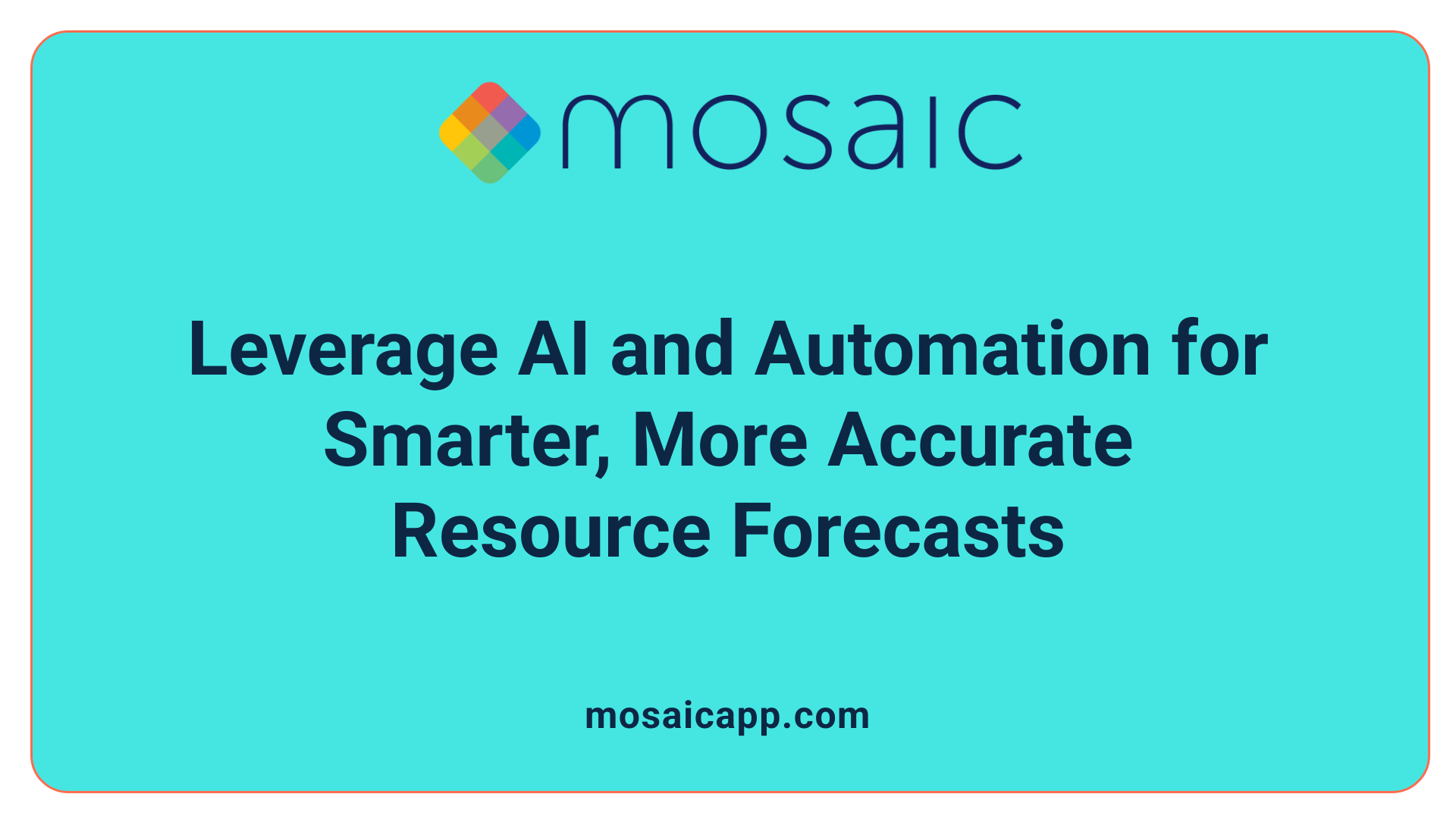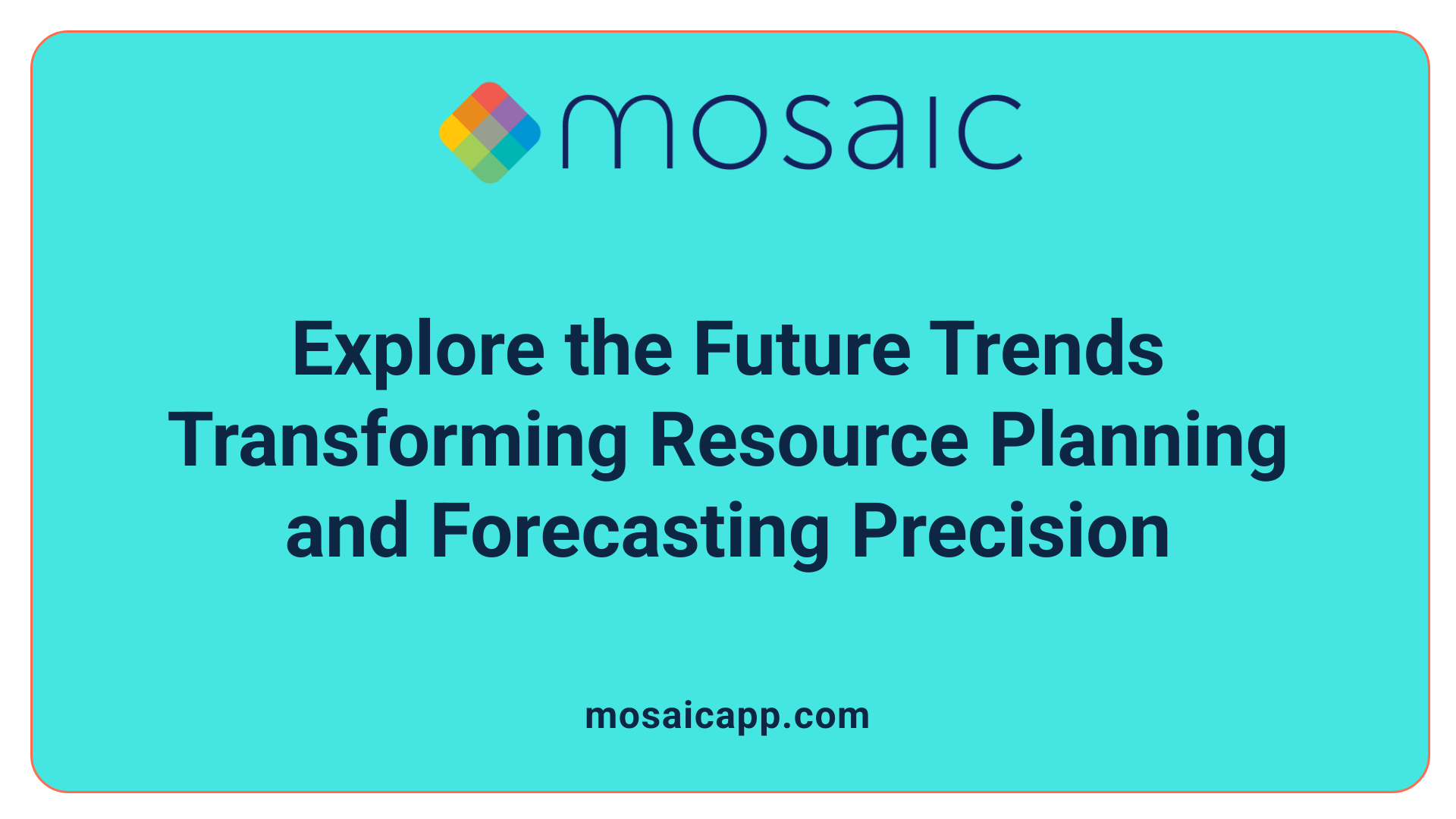The Strategic Role of Resource Planning in Organizational Forecasting
In today's dynamic business environment, organizations face increasing pressure to deliver accurate forecasts at scale. Resource planning tools have emerged as essential solutions that enable businesses to anticipate future resource needs, optimize utilization, and improve overall forecast accuracy. This article explores how state-of-the-art resource planning software facilitates large-scale forecasting, supporting both financial and operational objectives while adopting best practices for maximum effect.
Overview of Modern Resource Planning Technologies
How are cloud-based and SaaS solutions transforming resource planning?
Modern resource planning tools are predominantly cloud-based or offered as Software as a Service (SaaS). These solutions provide easy access from any location with internet connectivity, enabling real-time updates and collaboration across teams. They support scalability, allowing organizations to expand or modify features based on project size and complexity.
Cloud and SaaS platforms reduce the need for extensive on-premises infrastructure, lowering costs and simplifying maintenance. They often include user-friendly interfaces and automated updates, ensuring teams always work with the latest features.
How do integrations with ERP, CRM, and accounting systems enhance resource planning?
Effective resource planning relies heavily on data accuracy and timeliness. Top platforms seamlessly connect with enterprise systems like ERP, CRM, and accounting software. This integration enables automatic data synchronization, eliminating manual data entry errors and ensuring that resource availability, financials, and sales forecasts are current.
For example, integrating with ERP systems allows real-time visibility into inventory and supply chain constraints, while CRM integrations help anticipate demand shifts. Accounting system links provide insights into budget constraints and expenditures, supporting smarter resource allocation.
Why is real-time data consolidation and analytics vital?
Real-time data consolidation provides a unified view of resource utilization, capacity, and project demands across the organization. This immediacy supports quick decision-making and adaptive planning.
Advanced analytics turn raw data into actionable insights. Visualization tools, dashboards, and scenario modeling help managers assess current capacity, forecast future needs, and simulate the impact of potential changes. Techniques like regression analysis and trend forecasting enable organizations to anticipate industry shifts and adjust plans proactively.
What are some best practices for utilizing resource planning tools to enhance organizational forecasting capabilities?
To maximize the benefits of these tools, organizations should focus on comprehensive data integration by connecting sales, project plans, and timesheets, ensuring high data quality. Regularly reviewing and updating forecasts keeps plans aligned with current reality.
Employ scenario analysis and trend forecasting to explore future variability and prepare for industry changes. Standardizing templates and automating workflows increase efficiency and reduce mistakes.
Engaging stakeholders through ongoing communication fosters shared understanding and commitment to resource strategies. Leveraging real-time analytics and visualization tools allows for quick adjustments, while advanced techniques such as scenario analysis and regression help refine forecasts.
Ultimately, balancing technological capabilities with collaborative processes enables organizations to optimize resource allocation, reduce risks, and improve project delivery outcomes. Tools like Runn, Forecast, and Saviom exemplify these practices, supporting large-scale, accurate forecasting efforts.
Leveraging Cloud Platforms for Scalable Resource Planning

How can resource management software improve forecast precision and support organizational planning?
Resource management software significantly enhances the accuracy of organizational forecasts by providing instant, real-time insights into resource availability, utilization, and capacity. This immediate access enables teams to create more precise projections, reducing guesswork and leading to more reliable planning.
Advanced tools like Cube, Saviom, and Forecast incorporate scenario modeling and simulation features. These allow planners to assess different demand conditions and evaluate potential impacts before making final decisions. By examining various what-if scenarios, organizations can proactively identify bottlenecks and skill gaps, ensuring smoother project execution.
A crucial benefit of using these platforms is their ability to calculate true resource capacity, taking into account not only scheduled work but also meetings, administrative duties, and other commitments. This comprehensive view supports better workforce optimization and ensures resources are allocated effectively.
Moreover, forecasting tools help organizations plan for the medium to long term, typically 3 to 6 months ahead. They predict future resource needs based on current and upcoming projects, helping reduce delays, costs, and inefficiencies.
Why is scalability important for large organizations?
Large organizations often handle numerous projects and vast teams. Cloud-based resource planning solutions like Hub Planner, Project Insight, and monday.com offer scalable features that can accommodate their complex needs.
These platforms manage large data volumes and multiple workflows, providing customizable dashboards, advanced scheduling, and capacity management functions. Integration capabilities with widely used tools such as Jira, Outlook, Google Calendar, and Slack ensure seamless data sharing across departments.
With cloud scalability, organizations can add or remove resources, adjust project scopes, and update plans easily without disrupting ongoing activities. This flexibility is vital for adapting to market changes and organizational growth.
How does ease of collaboration and data sharing benefit resource planning?
Cloud platforms facilitate collaboration by centralizing data and enabling team members to access up-to-date information from anywhere. Features like shared calendars, heatmaps, and approval workflows make communication smooth and effective.
Platforms like Resource Guru and Wrike integrate with popular tools, allowing teams to coordinate schedules, track project progress, and share insights effortlessly. This integrated approach reduces miscommunication and ensures everyone works with the same data.
In summary, leveraging cloud-based resource planning tools fosters an agile, transparent environment where data-driven decisions support organizational goals with higher accuracy and efficiency.
| Tool Examples | Features | Integrations | Best For |
|---|---|---|---|
| Cube | Real-time data, scenario planning, integration with ERP/CRM | Excel, Google Sheets, ERP systems | Finance teams managing budgets and demand fluctuations |
| Saviom | Multi-dimensional analysis, scenario modeling | SAP, Salesforce, QuickBooks | Workforce planning and utilization optimization |
| monday.com | Task tracking, automations, Gantt charts | Slack, Google Calendar, Jira | Project teams needing flexible planning tools |
| Resource Guru | Team calendar, clash management, capacity insights | Google Sheets, Jira, Slack | Teams requiring detailed capacity and scheduling management |
This array of functionalities highlights the value of cloud-based tools in providing scalable, collaborative, and accurate resource planning solutions for organizations of all sizes.
Visual and Interactive Resource Scheduling Tools
What are some best practices for utilizing resource planning tools to enhance organizational forecasting capabilities?
To maximize the benefits of resource scheduling tools, organizations should focus on using features such as heatmaps and capacity charts. These visual tools provide immediate insights into resource utilization and availability, making it easier to identify bottlenecks or underutilized assets.
Heatmaps distribute workload visually, helping managers quickly see which teams or individuals are overburdened or underused. Capacity charts complement this by illustrating resource availability over time, assisting in ideal scheduling and planning.
Clash detection and conflict resolution are vital for preventing scheduling overlaps that can cause delays and resource conflicts. Modern tools support automatic clash detection, alerting planners to overlapping tasks that require rescheduling or resource reallocation.
Interactive dashboards and visualization technology further enhance planning accuracy. These dashboards allow stakeholders to dynamically explore scenarios, adjust parameters on the fly, and instantly see potential impacts on resources and project timelines.
Best practices for utilizing these tools include regularly updating data to reflect real-time conditions, standardizing resource planning processes, and incorporating stakeholder input for transparency and accuracy. Scenario analysis, enabled by interactive visualizations, helps anticipate future demand and prepare contingency plans.
Employing these practices and features not only improves forecasting precision but also boosts collaboration across teams. By leveraging real-time data and visual insights, organizations can better allocate resources, reduce conflicts, and adapt swiftly to changing demands.
| Feature | Benefit | Additional Details |
|---|---|---|
| Heatmaps | Visualize workload | Identify capacity issues at a glance |
| Capacity Charts | Track availability | Plan resource allocation efficiently |
| Clash Detection | Prevent scheduling overlaps | Automated alerts for conflicts |
| Interactive Dashboards | Dynamic scenario testing | Explore 'what-if' options in real time |
Using these interactive visualization tools offers a proactive approach, essential for navigating today's complex resource demands effectively.
Role of Integrations in Enhancing Resource Planning Accuracy
Many resource planning tools leverage integrations with popular applications like Google Calendar, Jira, and Slack to improve the accuracy of forecasting and planning.
Connectivities with these platforms enable real-time data synchronization, ensuring that team availability, project timelines, and resource allocations are always up-to-date. For example, when a team member updates their schedule in Google Calendar or logs work hours in Jira, these changes instantly reflect in the resource management dashboard. This continuous flow of information minimizes manual data entry errors and reduces delays in decision-making.
Workflow automation is another crucial aspect supported by these integrations. Automated alerts for scheduling conflicts, capacity overloads, or resource shortages help managers respond promptly and adjust plans accordingly. This automation streamlines processes, making planning more dynamic and adaptable.
What features and functionalities of resource planning tools improve forecast accuracy at scale? These tools typically offer a clear view of team skills, availability, and workload, enabling better alignment with project needs. They include capacity modeling, scenario analysis, and workload visualization, which help identify potential gaps and prevent resource overallocation. Advanced functionalities like AI-driven predictive analytics and real-time tracking further support proactive management. Combining these features with seamless integrations allows organizations to maintain current data, improve forecasting reliability, and adapt quickly to project changes, ultimately leading to more precise resource allocation and higher project success rates.
Methodologies for Accurate Planning and Forecasting

What methodologies can be employed with resource planning tools to achieve more accurate forecasts?
Achieving precise forecasts in resource planning requires the use of advanced methodologies that leverage data analysis and simulation techniques. Organizations can incorporate machine learning models, which analyze large datasets to identify complex patterns and predict future resource needs with high accuracy.
Scenario planning and simulations are essential for testing how different demand conditions or unforeseen events could impact resource requirements. These techniques allow teams to prepare contingency plans, reducing risks related to demand fluctuations or workforce availability.
Historical data analysis helps organizations recognize trends, seasonal variations, and recurring patterns that influence resource demand. By understanding past performance and cyclic behavior, companies can improve the confidence of their forecasts.
Combining these approaches with real-time data integration from various enterprise systems ensures forecasts are current and reflective of the latest business conditions. Using specialized tools that automate data collection and analysis enables faster decision-making and better resource allocation.
Moreover, monitoring industry trends and market indicators provides additional context, allowing organizations to adjust forecasts proactively based on external factors.
To sum up, employing a mix of machine learning, scenario modeling, rigorous historical analysis, and continuous market monitoring significantly enhances forecasting accuracy in resource planning. Coupled with stakeholder engagement and maintaining clean data, these methodologies form a robust foundation for reliable and responsive planning.
Using AI and Automation to Improve Forecast Accuracy

How can resource management software improve forecast precision and support organizational planning?
Resource management software plays a vital role in enhancing the accuracy of forecasts and aiding organizational planning. These platforms provide real-time insights into resource availability, utilization, and capacity, allowing teams to make more reliable projections.
One significant advantage is the ability to perform scenario modeling and simulation. This feature enables organizations to evaluate different planning options and anticipate potential bottlenecks or resource shortages before they occur. By assessing various demand conditions—such as high or low demand scenarios—businesses can adapt proactively.
Furthermore, these tools help calculate actual resource capacity by factoring in meetings, administrative tasks, and other responsibilities that might otherwise be overlooked. This detailed understanding allows for precise skill gap identification and better workforce allocation.
Forecasting capabilities extend beyond immediate needs, supporting long-term planning for 3 to 6 months ahead. This helps reduce delays, control costs, and improve overall efficiency.
Automation in data collection from ERP, CRM, and accounting systems ensures data accuracy and saves valuable time. The integration of AI-driven analytics enhances the prediction of future resource requirements, matching skills with upcoming project demands.
Real-time decision support features enable teams to quickly adjust plans based on current data, enhancing organizational agility. These capabilities allow businesses to stay ahead of demand fluctuations and optimize resource use.
How resource management software supports organizational agility and strategic alignment
By providing clear visibility into capacity and utilization, these tools foster better strategic decision-making. They help organizations align resources with evolving business priorities, reducing waste and improving project outcomes.
To visualize the impact, below is a comparison of typical features across popular resource planning tools:
| Feature | Functionality | Benefits | Example Tools |
|---|---|---|---|
| Real-time data integration | Automates data from various systems | Up-to-date forecasts, reduces manual errors | Cube, Scoro |
| Scenario modeling | Simulates demand and supply changes | Informed decision-making | Saviom, Project Insight |
| Capacity calculation | Considers actual work hours, meetings | Accurate resource planning | Runn, Forecast |
| Long-term forecasting | Predicts needs 3-6 months ahead | Reduces delays and costs | Polaris PSA, Resource Guru |
| Automation in data collection | Syncs data automatically | Saves time, increases accuracy | Various platforms |
In conclusion, AI-driven analytics and automation enhancements in resource management software are transforming how organizations forecast and plan. They enable more proactive strategies, minimize risks associated with resource shortages or overloads, and support sustainable growth.
Case Studies and Success Stories in Resource Planning
Real-World Examples of Resource Planning Success
Numerous organizations have demonstrated how effective resource planning enhances operational efficiency and project success. For instance, a mid-sized IT firm implemented Saviom's multidimensional analysis tools to optimize workforce utilization, resulting in a 20% reduction in project delivery times.
Another example is a global marketing agency that adopted monday.com’s task tracking and automation features. This shift significantly improved their capacity management, enabling real-time project adjustments and a 15% increase in billable hours.
A manufacturing company leveraged Scoro’s resource forecasting capabilities to better align their supply chain with production demands, leading to a 10% decrease in overhead costs and improved delivery timelines.
Implementation Challenges Faced and Overcome
Transitioning to new resource planning tools often involves hurdles such as data siloing, resistance to change, and integration complexity. For example, an engineering firm struggled initially with data inconsistency across systems like ERP and CRM. They addressed this by establishing standardized data entry protocols and integrating all systems through a centralized platform, which improved data reliability.
Resistance to change was another barrier. To overcome this, organizations involved key stakeholders early in the process, provided comprehensive training, and highlighted the benefits to gain buy-in.
Measurable Improvements Achieved
Effectively deployed resource planning tools have led to clear, measurable outcomes. These include increased forecast accuracy to over 85%, better resource utilization rates above 80%, and reduced project overruns by approximately 12%.
Organizations also report enhanced visibility into capacity utilization, enabling proactive adjustments rather than reactive firefighting.
| Organization | Tool Used | Key Outcome | Improvement Percentage | Additional Details |
|---|---|---|---|---|
| IT Firm | Saviom | Reduced delivery times | 20% | Better resource utilization |
| Marketing Agency | monday.com | Increased billable hours | 15% | Real-time adjustments |
| Manufacturing Co. | Scoro | Lower overhead costs | 10% | Improved supply chain alignment |
Best Practices for Better Forecasting using Resource Planning Tools
To get the most from these tools, organizations should focus on selecting solutions that integrate with existing data sources like sales, project plans, and timesheets, ensuring data accuracy. Regular updates and reviews of forecasts help stay aligned with real-time conditions. Scenario analysis and trend forecasting can anticipate future industry changes and workload fluctuations.
Standardizing templates and automating data entry streamline processes, reducing errors and saving time. Active stakeholder engagement through ongoing communication fosters shared understanding and commitment to resource strategies.
Leveraging advanced visualization and analytical features—such as heat maps and advanced dashboards—provides deeper insights into capacity and demand. Incorporating techniques like regression analysis and scenario planning enables organizations to optimize resource allocation, mitigate risks, and meet project goals with greater precision.
By following these practices, companies can transition from reactive to proactive planning, improve accuracy, and support sustainable growth.
Conclusion: The Future of Resource Planning and Forecasting Accuracy
 Emerging trends in technology are shaping the evolution of resource planning and forecasting methods. Advanced software platforms now offer real-time data integration, scenario modeling, and AI-driven analytics that enable organizations to predict future needs more precisely.
Emerging trends in technology are shaping the evolution of resource planning and forecasting methods. Advanced software platforms now offer real-time data integration, scenario modeling, and AI-driven analytics that enable organizations to predict future needs more precisely.
One significant advancement is the integration of artificial intelligence and machine learning into resource management tools. These technologies analyze vast datasets to uncover patterns, forecast demand fluctuations, and optimize resource allocation automatically. For example, platforms like Polaris PSA by Replicon employ AI to support predictive analytics and resource allocation, providing a proactive approach to planning.
Data analytics continues to improve, allowing for deeper insights into utilization, costs, and project impacts. Heatmaps, multidimensional analysis, and scenario simulations help organizations visualize overload risks, capacity gaps, and profitability implications, leading to more informed decisions.
What methodologies can be employed with resource planning tools to achieve more accurate forecasts?
Organizations are now adopting various methodologies to enhance forecast precision. Utilizing machine learning models helps identify complex patterns that traditional methods might miss. Scenario planning enables teams to prepare for different demand or resource availability situations, reducing surprises.
Historical trend analysis provides context by highlighting seasonal variations and cyclical patterns, while real-time data adjustments support dynamic planning. Industry trend monitoring offers strategic foresight, allowing forecasts to adapt proactively.
Integrating these methods with sophisticated software—such as Saviom's real-time optimization or Monday.com's workload forecasting—allows for automation, reducing manual errors and increasing agility. Engaging stakeholders and maintaining high-quality data are also essential for reliable forecasting.
More about future trends
Looking ahead, the focus will likely be on improving predictive accuracy through richer data sources, enhanced analytics, and smarter automation. As AI models become more refined and integrated within broader enterprise systems, organizations will experience increased confidence in their capacity planning.
This convergence of technology promises to transform resource management from reactive firefighting to proactive strategic planning. The ongoing development of tools with embedded AI and advanced analytics will be vital for organizations aiming to stay competitive and agile in an increasingly complex environment.
Charting the Path Forward in Resource Forecasting
The evolution of resource planning tools signifies a paradigm shift in how organizations approach forecast accuracy at scale. Thanks to advancements in AI, integration capabilities, and data analytics, future resource management solutions will provide even more precise, automated, and proactive planning. Emphasizing a holistic approach that combines technological innovation with best practices will empower organizations to achieve higher levels of efficiency, agility, and strategic alignment—ultimately enabling them to navigate market complexities with confidence and precision.
References
- The 6 best demand forecasting and planning software ...
- 23 Best Resource Management Software Reviewed 2025
- AI-Powered Resource Management & Forecasting
- How to do resource forecasting the right way
- 5 Most Beloved Capacity Planning Tools
- 5 Common Features of Resource Management Software
- How to do resource forecasting the right way
- Resource Forecasting in Project Management: A Quick Guide
- What is resource forecasting and how can it benefit your ...


